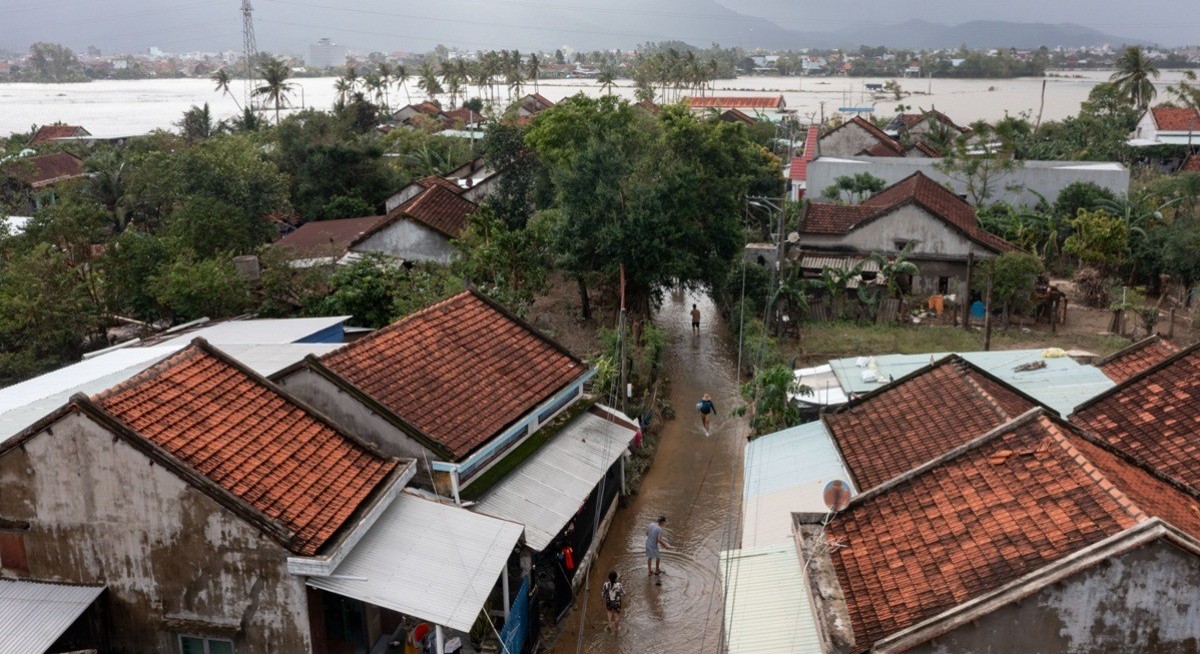(Nov 27): Vietnam has been pounded by a series of deadly disasters and historic floods this year that have racked up at least US$3 billion ($3.89 billion) in losses and exposed the nation’s flimsy climate defences, just as another storm bears down on the region.
Recovery efforts continue in five central provinces where severe flooding and landslides left at least 98 dead over the past week and caused economic damage estimated at more than 14 trillion dong (US$546 million), according to the government. Many families have lost their homes and livelihoods after prolonged floodwaters compounded an already torrid storm season.
“Vietnam is among the countries most exposed to natural disaster risks,” said Nguyen Phuong Loan, a climate scientist at the University of New South Wales. Heavy flooding impacts have been the result of “climate change, natural conditions and poor adaptation policies,” she said.
With 14 major storms already hitting Vietnam this year and another on its way, the challenges are only going to become more acute for the Southeast Asian nation, whose 3,200-kilometre (1,988-mile) coastline makes it particularly vulnerable to storm surges and flooding.
Storm damage alone has caused an estimated 85 trillion dong (US$3.2 billion) of economic losses this year so far. Last year, the toll of natural disasters hit a record US$3.5 billion with almost 500 deaths recorded, after Super Typhoon Yagi cut a swath of destruction across north Vietnam.
See also: Vietnam flood deaths reach 90 as damage sweeps central region
In recent weeks, tourism hubs Hoi An, Danang and Nha Trang have all been submerged. The historic city of Hue saw more than 1,700 millimetres (5.6 feet) of rain within 24 hours in October, close to the global record. Meanwhile, the capital Hanoi was left under water twice in two weeks, bringing the city centre to a standstill.
Heavy rain delayed harvesting in Vietnam’s biggest coffee-growing province of Dak Lak, where farmers are still assessing the extent of damage to crops in the world’s top producer of robusta beans.
While attribution studies point to the role of climate change in worsening the severity of recent natural disasters, the impacts have also been exacerbated by failures in resilience strategy, including “deforestation, poorly planned urban development, land reclamation, and the obstruction of natural drainage systems,” according to Loan.
See also: Why is Singapore allocating US$500 mil to Fast-P and how will it become US$5 bil?
Vietnam’s climate adaptation plan lodged with the United Nations in September sets out the many gaps in the nation’s resilience strategy. Some warning systems for incidents like flash floods or landslides don’t yet meet requirements, 70% of sea dykes have yet to be upgraded, and more than 1,000 reservoirs are degraded or damaged. “Current policies mainly focus on disaster recovery rather than prevention,” Loan said.
A World Bank assessment estimates that, without proper adaptation and mitigation measures, climate change will cost Vietnam about 12% to 14.5% of gross domestic product a year by mid-century, and that additional investment on climate adaptation by 2040 of roughly US$254 billion is required. “It is difficult for Vietnam to meet such a demand without the contribution from external sources,” the adaptation plan said.
International donors have stepped up immediate support, with South Korea, Australia, the UK, US and other nations pledging aid for relief efforts and long-term recovery for communities battered by consecutive severe storms. Nations at this month’s COP30 UN climate talks in Brazil also vowed to triple climate adaptation finance by 2035, though the target date is later than many had hoped for.
Rapidly delivering more funding for adaptation projects is seen as crucial for vulnerable nations globally, and the UN has warned that financing needs in developing countries are 12 to 14 times higher that the amounts currently available.
Vietnam’s experience is mirrored across the wider Southeast Asia region, where Thailand, the Philippines and Malaysia have all reeled in recent months from notably intense rainfall or floods. Neighbouring nations also have similar challenges in boosting their ability to withstand the impacts of climate change.
Southeast Asia needs roughly US$20 billion of adaptation finance a year and receives only about US$2.5 billion, Climate Policy Initiative said in a September report.
Vietnam’s most recent emissions reduction strategy, published in 2022, estimated that state resources would only be able to meet about 30% of the country’s adaptation needs.
To stay ahead of Singapore and the region’s corporate and economic trends, click here for Latest Section
The nation should aim to maximise the use of affordable natural defences, said Benjamin Horton, dean of the School of Energy and Environment at City University of Hong Kong. This could involve plans such as protecting mangroves to act as a buffer to storm surges, preserving oyster beds that can help reduce the intensity of waves, or conserving tropical rainforest that binds together soils.
“We have the innovations and the adaptations,” said Horton. “They don’t have to be really expensive, like building a billion-dollar tidal barrage. Using nature-based solutions in many cases is the best option.”
Uploaded by Liza Shireen Koshy





